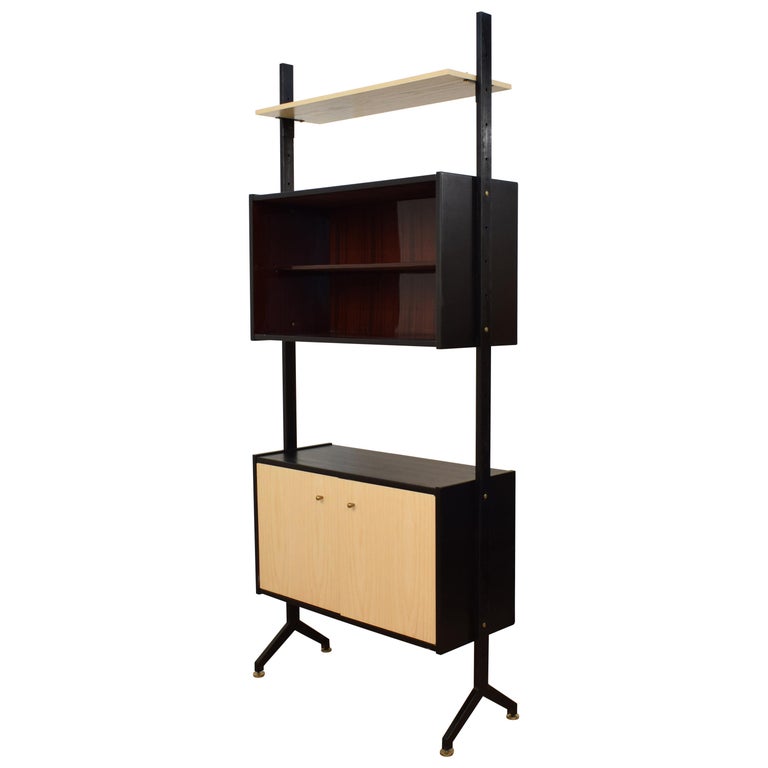Hi all,
Happy 2017! I picked up a group of stacking chairs recently but have been unable to unearth anything about them since.
Here is the extend of what I have:
1) I was told these were purchased in Japan about 15 years ago and were used in a residence since then.
2) The frames are aluminum round stock.
3) The seats are thick card stock with what appears to be a lacquered finish; the seat bottom has a reinforcing section of card stock riveted under the seat.
4) Quality appears high. Bends in aluminum legs are precise with no tool marks. Paper seats have held up well with no tearing. Rivets are set flush with paper seats.
5) Two u-shaped leg sections, not connected by crossmember. Shear is carried by the paper seat and seatback.
6) Google Translate gives me this translation of the tag under the seat:
Quality indication size of chair
Dimensions Width about 480
Do all of the chairs have that kink in the backrest? Is that rigid or just a little slack that is flexible?
If rigid and part of the design, how does it feel to sit in? My first guess would be that it is not comfortable but maybe it's designed to give specific lumbar and shoulder blade support.
Very interesting chairs teakhound, I hope you can find out more about them.
Only in Japan that a humble and unconventional material can be explored and used for something else like the work of architect Shigeru Ban using cardboard tubes for his houses in the 1990s and the structure for the Japan Pavilion from 2000, the Cabbage chair by Nendo and pretty sure there are others.
Also the Honey Pop chair from 2001 by Tokujin Yoshioka.
And not from Japan but Frank Gehry's corrugated cardboard chairs originally sold at Bloomingdales in the late 1970s and now produced by Vitra.
Teakhound, I appreciate its innovative use of paper, like Noguchi's work and many great designs from Japan, it successfully crosses as part art/sculpture, part furniture...maybe Issey Miyake designed those chairs, the design and the idea is so abstract so conceptual.
The idea of using paper as a seat reminded me of how the wood part of a Japanese temple has to be rebuilt every century or so, like the paper is supposed to be ephemeral and when it breaks down, the owner makes a new piece from scratch.
The bark of the mulberry tree if I am not mistaken is the best pulp used in the art of Japanese paper making. I remember in my SCI-Arc days in that paper making/sumi'e class, Yoshio Ikezaki made a slab of paper for a patron, 8'X15'X6" thick approx. and like many oversized art, it was delivered to a residence in Malibu,CA on a flat bed truck with police escorts closing down PCH at 2 am for a paper that weighed almost a ton.
Shiro Kurumata's work is amazing, I can only afford to drool in front of them whenever I see one in an art museum or Christies and Sotheby's.
I have an update!
The former owner has finally relayed a message from his wife who is traveling abroad at the moment and who originally purchased the chairs. It seems they were purchased at Muji, a Japanese "lifestyle store."
According to Wikipedia, Muji is a "no-brand" brand, which is probably why I have never heard of them. Naoto Fukasawa, Jasper Morrison, James Irvine, Sam Hecht, and Konstantin Gr
Hi all,
I have an answer directly from MUJI: The chair was the product of a collaboration between MUJI and Cassina. It was officially released on October 1st, 1992 and received the Good Design Gold Award in 1993. Link here: http://www.g-mark.org/award/describe/20333
An early picture is attached. Looks like the seat back creases were all intentional.
If you need any help, please contact us at – info@designaddict.com









